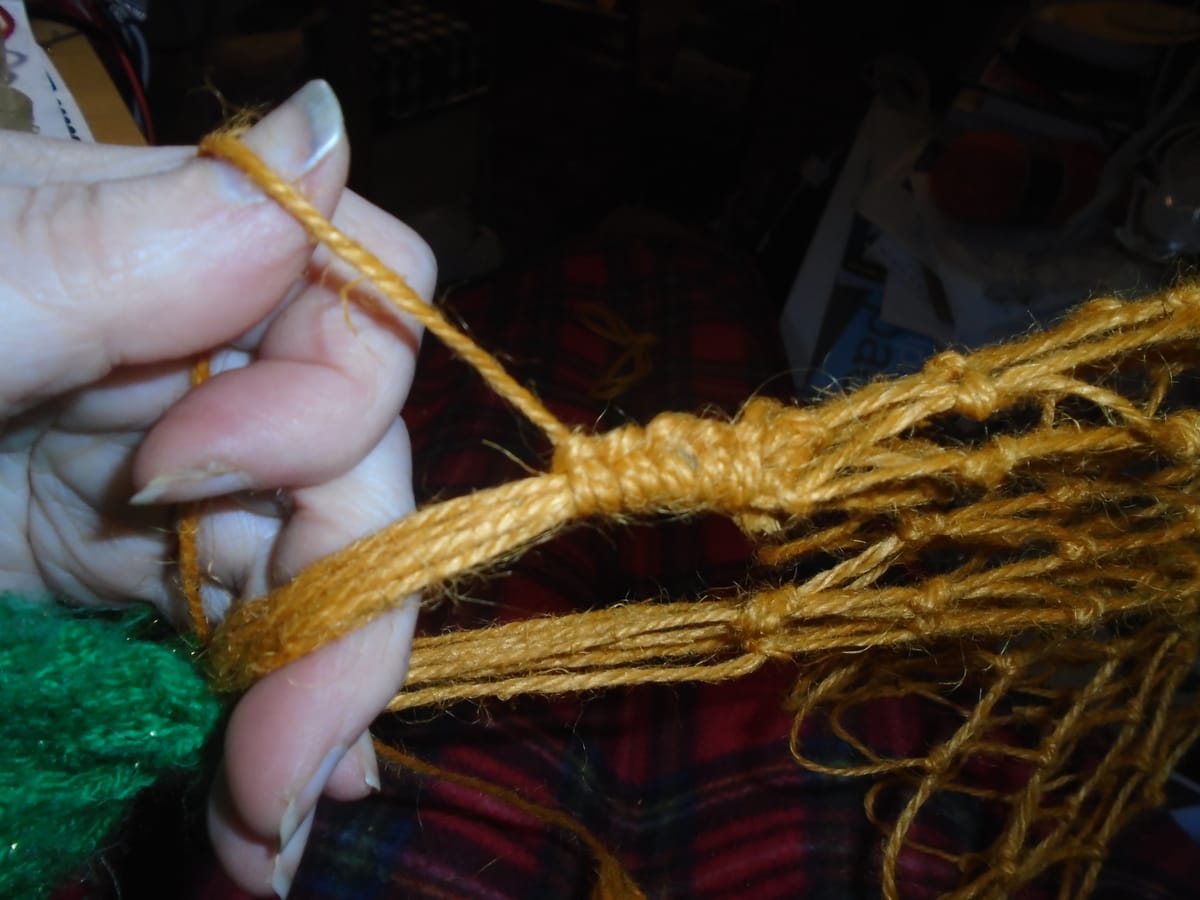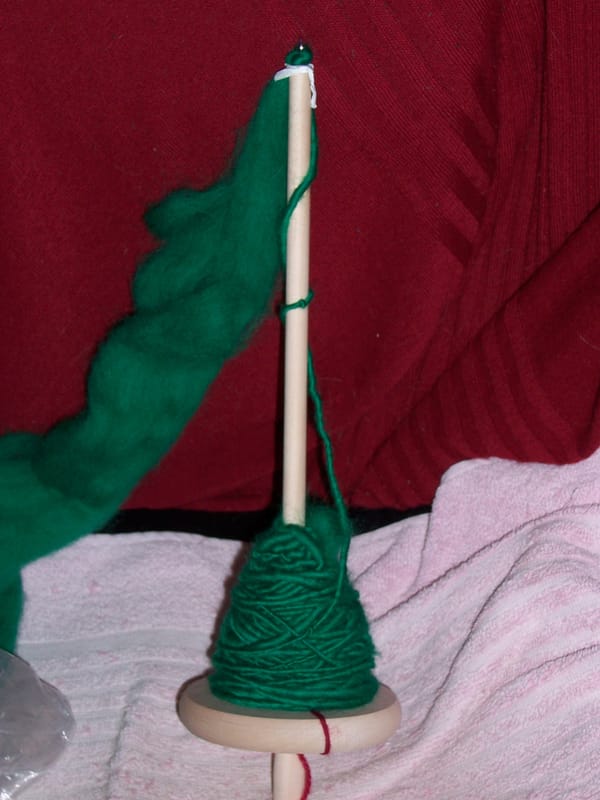I can handle this

I think I've mentioned before that we tend to struggle for bags at the food bank. (Although, having said that, the bag situation is a little better than it was, because at the moment we're getting a lot of refugee families. Most of them don't speak English very well, so the process of getting vouchers can be a bit fraught for them, and very often they don't have one; but they do have bags. They're really good about bringing their own bags. Several of them even have trolleys! We love those!) But, all the same, we have a wide range of visitors, not just the refugees, and bags are still an ongoing headache. Your local food bank is almost certainly exactly the same, unless they have a friend who works for one of the big supermarkets and is in a position to donate carrier bags regularly... or they got lucky (like we did early on) and scored a batch of those little cotton totes because they'd accidentally been printed with the wrong phone number. It's like choirs never having enough tenors. Food banks never have enough bags.
Put that together with the excellent Mr Holdgate's practical netting course, and everything meshes (pun 100% intended; I always intend my puns!). Much as I like string bags - they're wonderful things; they scrunch up into your pocket and then open out to swallow an unfeasible quantity of groceries - I don't actually have a use for one myself, because there are no shops round here. I get all my groceries from Ocado, who deliver everything in flimsy film carriers that are no use for the food bank, though at least you do get your 10p refunded on them if you hand them back for recycling. And when I say no shops, I do mean, literally, no shops. This is a New Town. It's been around significantly less than ten years. What we have, apart from a lot of housing, is: three schools, and one a-building (well, partially built - I think its nursery section is already open); a rather ramshackle temporary community centre in a Portakabin, where they have fixed the leaky roof and promised us we'll have a permanent one in eighteen months (not a brick has yet been laid); a sports pavilion (not sure how or why that was prioritised over shops and other facilities); a rather nice children's playground; two churches, neither of which has its own building; a pub which has only very recently discovered that vegans exist; a couple of large ponds which are optimistically known as lakes (listen, I'm from the Lake District, I know what a real lake looks like!); and a post box. Triumphant. There's a Co-op in the next village that I can't get my scooter into. The Internet is a wonderful thing.
But I digress. The food bank doesn't have enough bags, and I have a potential surfeit of string ones; so I had a word, and as a result of this word (which was received with enthusiasm, as you might expect) I am now making test bags. It has already become clear that following Mr Holdgate's simple shopping bag pattern precisely is not going to work. For one thing, it's not deep enough. I'd guess that the original version would hold maybe half a dozen regular-size tins. (Has anyone noticed that tinned vegetables often come in slightly smaller tins, unless they're potatoes, in which case they tend to come in slightly larger ones? If there are smaller tins I always put them at the front of the display, and they're invariably peas, carrots, or sweetcorn.) Yes, well, even a single person is going to get about twice that many tins, plus milk, juice, cooking oil, cereal, sugar, pasta, pasta sauce, biscuits... it's not all going to go into one bag no matter what, but you do want a larger bag. So right from the start I had to work several extra rounds to make the bag big enough to function; the bag in the photo has 13 full rounds of meshes (plus the initial grommet), and when stretched out like this it's about 45 cm deep. And I'm still thinking it's quite a small bag. I will do more than one, though, and make them all a bit different so that we can establish the most useful version.
The main thing you learn from making the bag is how to do increases. Like the hanging basket earlier, this bag starts with a 12-loop grommet; but where it differs from the hanging basket is that there are increases, four on each of three alternate rounds, so that you end up with a circumference of 24 meshes. It gives the bag a better shape and more capacity, and it is very easy to do - all you do is mesh into the same loop twice. And, come to think of it, I'm pretty certain it's what you do to make square-mesh netting. I do remember you make it diagonally (which is the only way one can make net), starting with one loop in the corner and increasing once on every row until one of your sides is the length you want. If you're making a square, you then start decreasing on every row, whereas for a rectangle you start the decreases on one side but keep increasing on the other till that side is also the right length. It's coming back... slowly.
And then there are the handles, as shown in the photo. Sorry, Mr Holdgate, but incorporating all the meshes into the handles is not going to work here, despite your lovely diagrams. I was about to do just that, but realised in time that this would make the top opening far too small (it's going to be on the small side anyway, but at least usable; on the next bag I shall make it larger by bringing in fewer of the meshes). What I'm doing here is making a set of alternating half hitches over the handle, which, if you take them in pairs, is also a set of clove hitches. I haven't done alternating half hitches before, but what you get is a handle that is nice and smooth on the inside but has a kind of small brickwork effect going round the outside. It's a nice finish. Though I do have to say that, for the first time in the entire course, Mr Holdgate is guilty of an ambiguous instruction: he says "make a 6-inch handle", and my first thought is "15 cm", and my second thought is "does he mean the length of the actual handle, or does he mean the height of the handle when you're holding the bag, which is a little under half the length?" I tried it out, and 15 cm for the length of the handle seemed a bit short (I could get my tiny hands into the gap, but some of our visitors are big blokes and they'd struggle), but on the other hand 15 cm in height seemed a bit long. I compromised. My handle is about 20 cm long.
They're quick to make, so I hope to make a few more over the weekend and we'll see what we end up with. Even the rejects are going to be useful for something, so I can't really lose!




